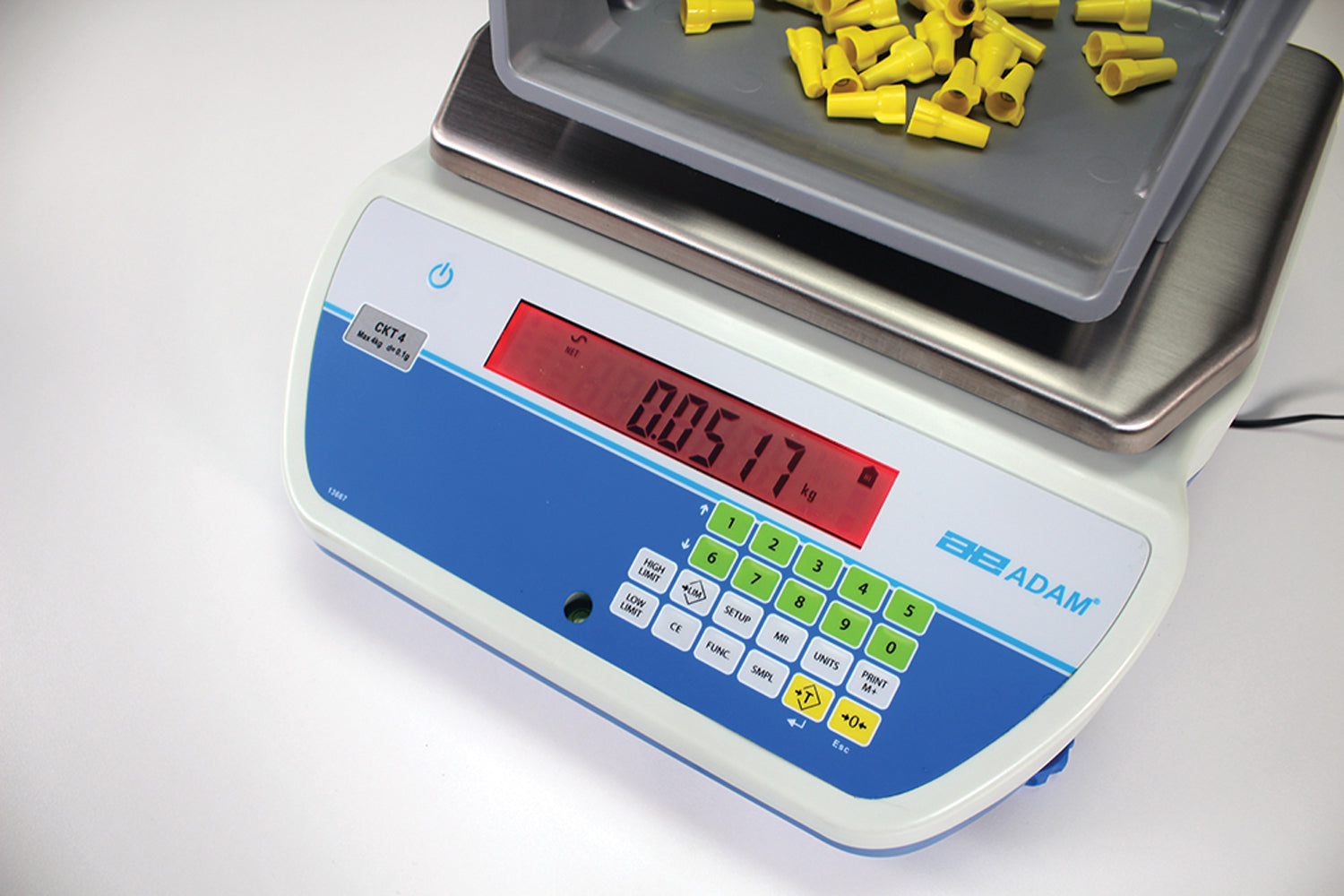
How to Choose the Best Checkweighing Scale
Red, yellow or green – which will it be? Choosing a checkweighing scale can be difficult, so we want to help you learn which one will be the best for you. We’ll discuss what a checkweighing scale is, what makes it different from a scale with a checkweighing function, common applications for checkweighing scales and, finally, the top five questions to ask yourself while scale-searching.
What is Checkweighing?
Checkweighing is the ability to set high and low weight limits on your weighing scale or balance. Your weighing scale will then let you know if the item you place on the scale is above, within or under those limits. For example, if you need to pack a cereal box with at least 350g of Weet-Bix but no more than 375g of Weet-Bix, those are your high and low limits. If your boxes fall within that range after filling them, it’s safe to move them on to the next stage of production. If not, simply add or remove product until it reaches an acceptable weight.
Checkweighing Scales vs. Scales with Checkweighing
Many weighing scales offer a checkweighing function, but that doesn’t necessarily mean they’re checkweighing scales. Checkweighing scales will have specific features dedicated to checkweighing that make the process of using the application easier. Adam’s Cruiser CKT offers a colour-changing display, buttons dedicated to quickly accessing important settings and a full numeric keypad for inputting limits. In addition to the lights or coloured displays, some have alarm tones for an audible method of notification.

Weighing scales with a checkweighing function, like the Aqua ABW-S or the Latitude LBX, offer interfaces geared toward regular weighing tasks. There are hidden-until-necessary checkweighing indicators, but they’re not large and flashy like a colour-changing display. This makes them ideal for occasional checkweighing. If you have a job that requires frequent use, investing in a checkweighing scale will save time and effort.
Common Applications for Checkweighing Scales
Quality Control
- Setting an acceptable weight range with a checkweighing scale allows for natural variation of weight that could occur in certain products, particularly in the food & beverage industry
- Makes it easy to notice if certain batches are too high or low in weight more often than others, which may call for a production audit
Packaging
- When filling boxes of products like cereal, screws or flaxseed that can’t be counted individually, checkweighing ensures that each box gets the minimum weight requirement of product without losing the company money
- Being above or below weight isn’t the end of the line, product can be added or removed to meet requirements at this stage

Sorting & Grading
- Checkweighing scales can assist with separating parcels into weight categories in the shipping and receiving industry. This can help calculate shipping prices and decide where the package should go when it’s ready to be shipped.
- Also ideal for sorting fruits and vegetables to price them by weight class for farm and grocery stores
Key Questions When Considering a Checkweighing Scale
Answering these five questions will help guide you towards the best checkweighing scale for you.
1. What Kinds of Items Will You Be Weighing?
This question will help you determine the right capacity, as you should always aim for your most-weighed products to fall near the middle of your scale’s weight limit. If you’re weighing refrigerators, you’ll want a high-capacity checkweighing scale like Adam’s PT Platforms paired with the GK-Plus indicator. If you’re weighing parcels for shipping, a floor scale like the GFK-Plus that offers models with capacities spanning from 75kg to 600kg may be more suitable. For small items like boxes of paper clips, a Cruiser CKT Bench Scale will be ideal.
2. How Precise Do Your Limits Need to Be?
The general rule of thumb is the higher the capacity, the coarser the readability will be, which is why one scale does not fit all. A box of paper clips that needs to fall between weight limits only a gram apart can’t be weighed on a platform scale, as some don’t even display grams. Consider the limits you’ll be working with and find a way to best balance the capacity with the readability.
3. Do You Need Any Form of Connectivity?
If the results aren’t recorded, did they even happen? Many Adam checkweighing scales like the Cruiser CKT, GBK-Plus and GFK-Plus offer RS-232 and optional USB interfaces. They can be used to connect with printers like the AIP or software like Adam DU. That way, whenever items are weighed, the results are recorded. They’re even marked to indicate whether they were above, within or below the limits and what the limits were. This is a great way to maintain traceability.
4. Do You Need Your Scale to Be Portable?
This question may or may not be truly your choice depending on what you’re weighing. PT or PTM platforms are less portable than the Cruiser CKT simply because of its larger size. That being said, the Cruiser CKT offers a 100-hour battery life, while the GBK-Plus and GFK-Plus are up to 120 hours – that’s three full working weeks!
5. Will You Be Performing Any Non-Checkweighing Tasks?

While checkweighing will presumably be your main task, will you need to perform the occasional parts counting, percentage weighing or dynamic weighing? The Cruiser CKT offers five applications in addition to checkweighing – parts counting, percentage weighing, check counting, total and accumulation. The GBK-Plus and GFK-Plus also offer five, but instead of check counting it offers dynamic weighing. Don’t feel the need to purchase a new scale for a few extra tasks! Put your checkweighing scale on the job.
Need help deciding which checkweighing scale is right for you? Contact the Scaletec team, we’ll be happy to help.
